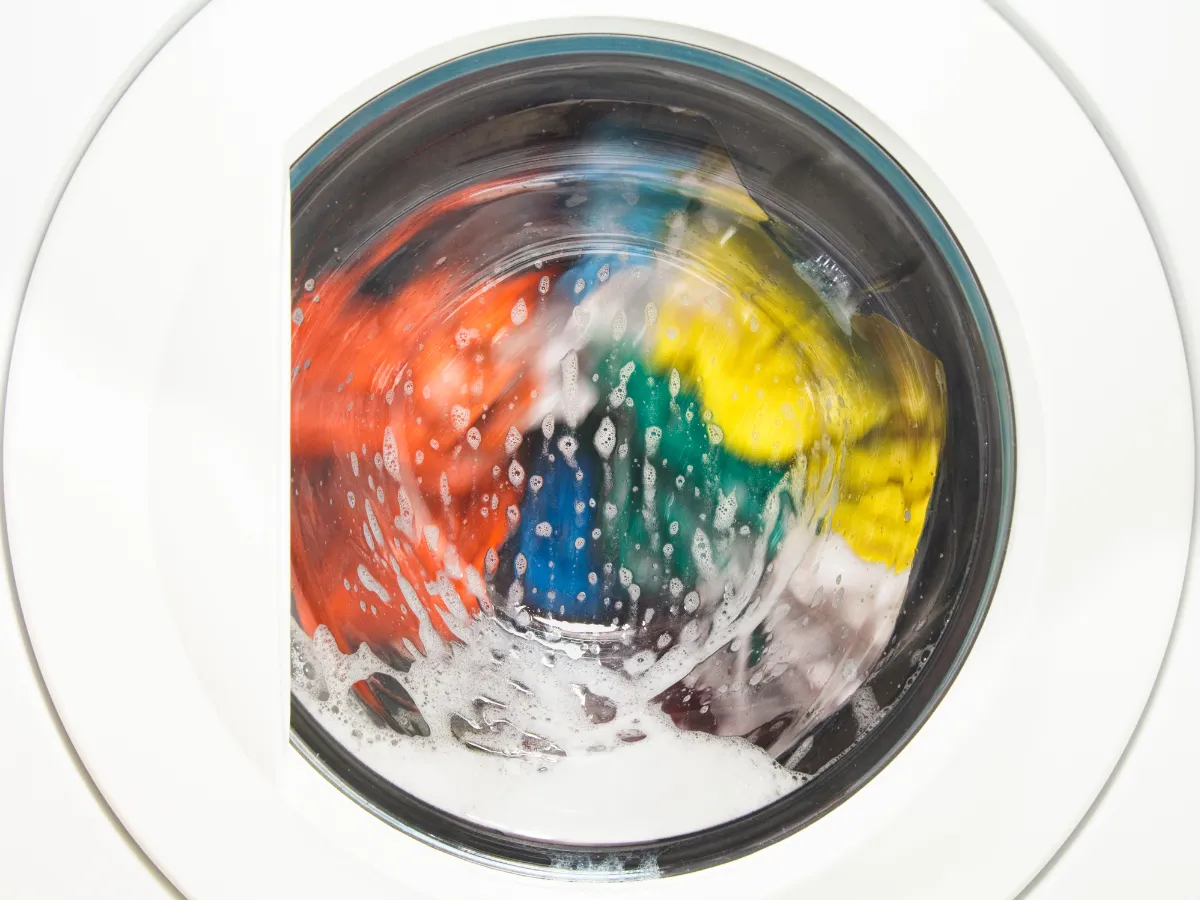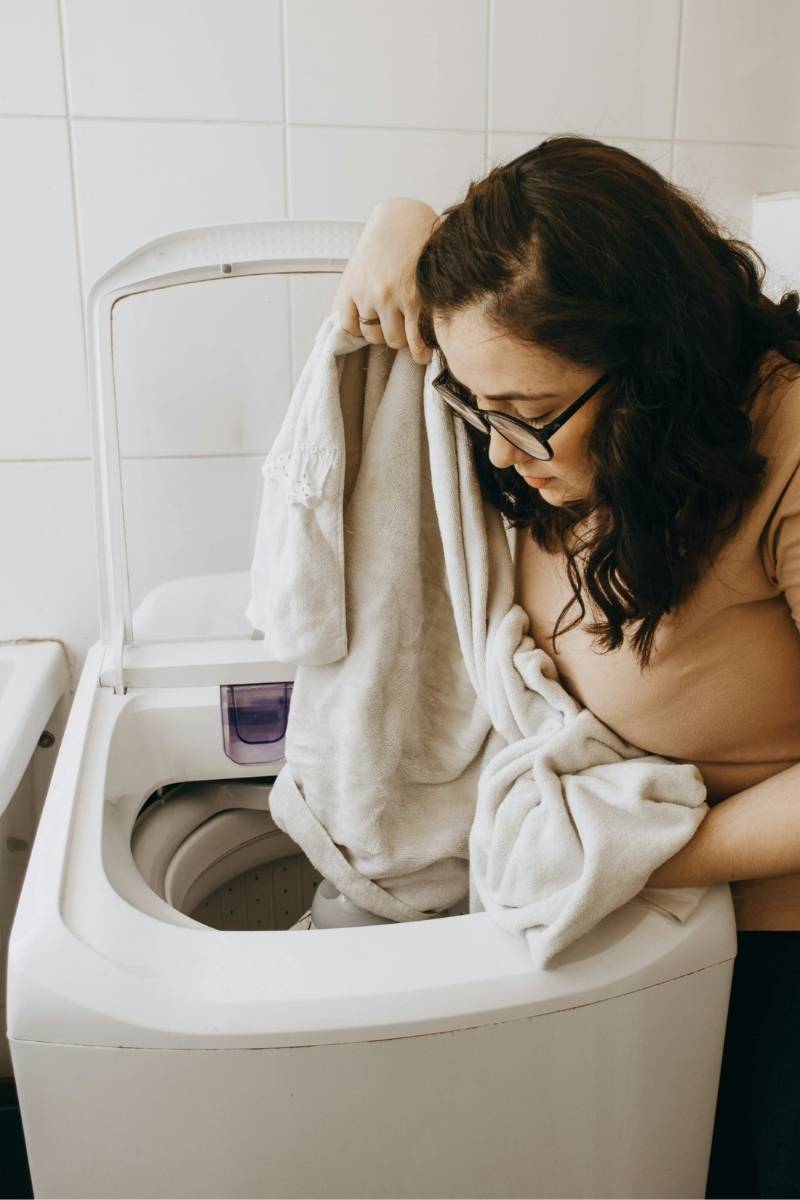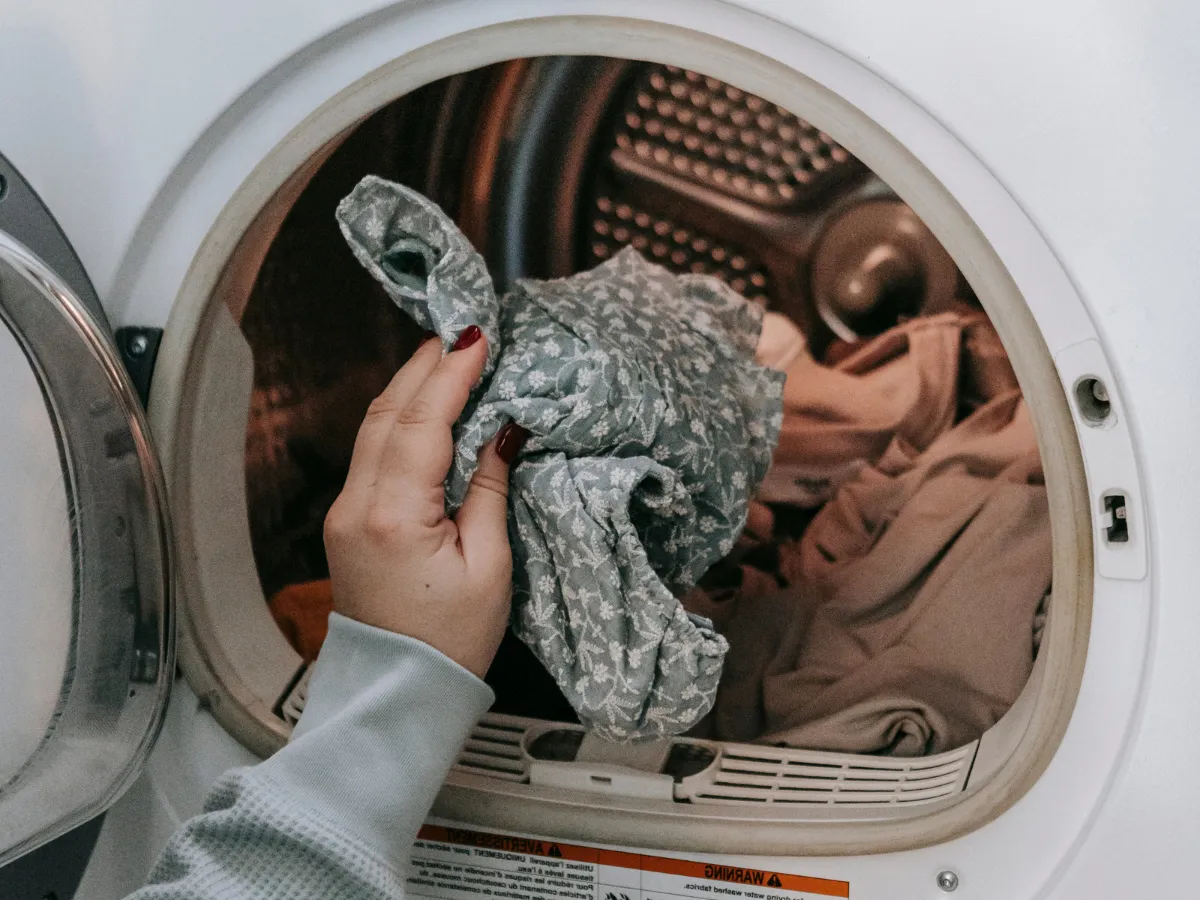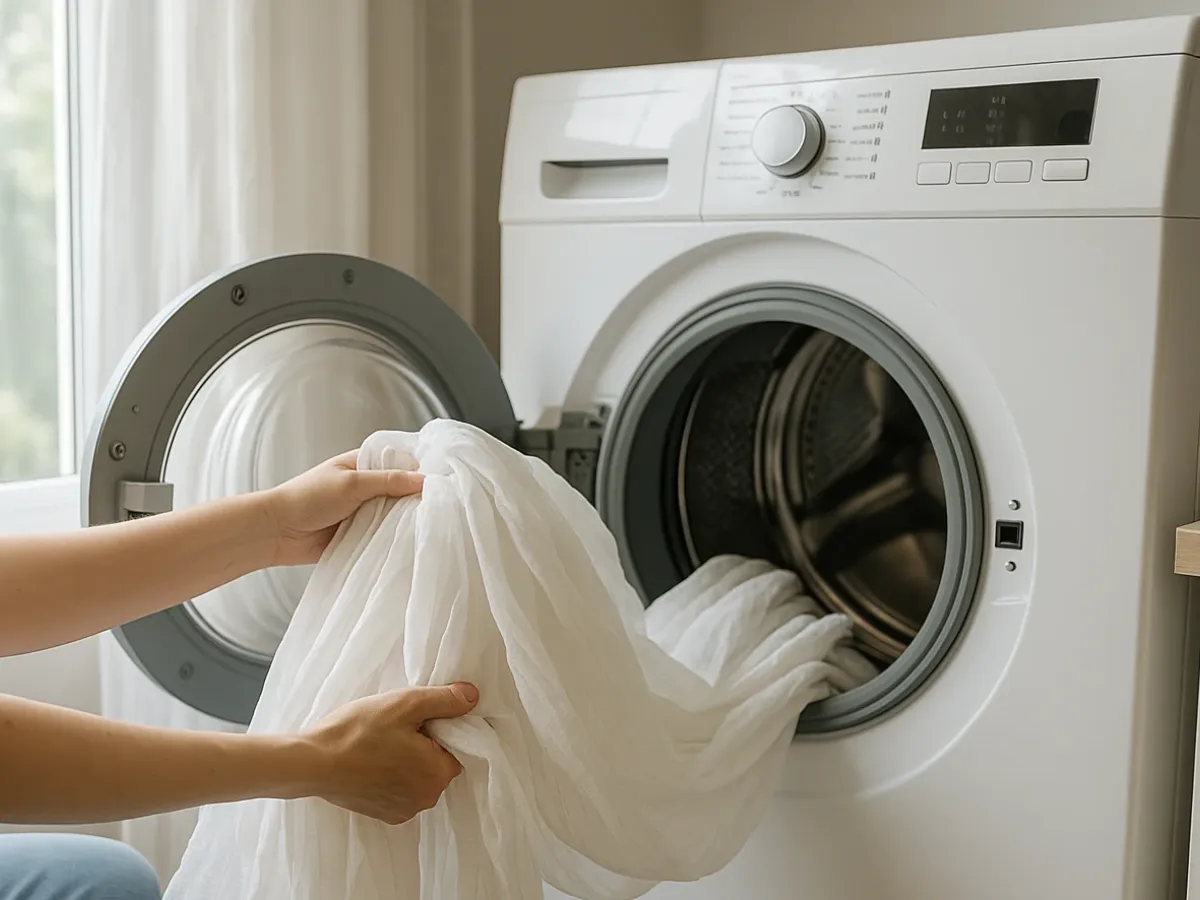Prewash in Washing Machine: The Secret for Very Dirty Clothes (When & How to Use)

Looking at your washing machine's control panel, you've likely seen a symbol or button indicating "Prewash". Many users ignore it or aren't sure what exactly it's for. However, the prewash in the washing machine can be a powerful ally when facing particularly tough laundry loads with set-in dirt or stubborn stains. But when is it really necessary to use it? How does it work, and what detergent should you put in?
In this complete guide, we'll demystify the prewash function. We'll explain what it is, its purpose, the ideal situations to activate it, how to use it correctly, and whether it truly makes a difference in the final outcome of your laundry. Find out if you need to incorporate prewashing into your routine!
What Exactly is the Prewash in a Washing Machine?
Think of the prewash as an "appetizer" for your clothes before the "main course" (the normal wash cycle). It's a short, preliminary cycle that the machine runs before starting the main wash program you've selected.
During the prewash, the machine performs a process similar to a mini-wash:
- It takes in a small amount of water (usually cold or lukewarm, around 30°C/86°F).
- It uses the detergent you've placed in the specific prewash compartment (marked with an "I" or "1" in the drawer).
- It performs gentle agitation for a short duration (usually lasting 15 to 30 minutes).
- It drains the dirty water used in this phase.
Immediately afterward, the washing machine begins the main wash cycle you programmed, using the detergent from the main compartment (marked "II" or "2") and water at the temperature selected for that cycle.
It's important to understand that the prewash does not replace the main wash; rather, it acts as preparation to facilitate the removal of tough dirt.

What is the Real Purpose of Prewash?
The main goal of prewash is to soften and begin loosening heavily ingrained dirt and difficult stains before the deep clean begins. By soaking and treating the clothes with detergent in this initial phase, you achieve:
- Improved Main Wash Effectiveness: By removing some of the most superficial and stubborn dirt, the detergent in the main cycle can work more effectively on the remaining soil and fibers.
- Treatment for Dried or Set-in Stains: It's particularly useful for stains that have had time to dry and adhere strongly, like mud, grass, dried blood (though blood requires specific treatment), or dried-on food residue.
- Reduced Need for Hand Scrubbing: For very dirty garments, prewashing can save you the step of manually scrubbing stains before putting them in the washer.
- Combating Strong Odors (in some cases): It can help start neutralizing very intense odors before the main wash, although for persistent odors, you might also need to disinfect the clothes.
When SHOULD You Use Prewash? Ideal Situations
Prewash isn't necessary for every load. In fact, using it unnecessarily consumes more water and energy. Reserve it for these specific situations where it truly adds value:
- Very Dirty Work Clothes: Mechanic uniforms, gardening clothes, construction gear with mud, grease, oil...
- Extremely Soiled Sportswear: Gear full of mud, ingrained grass, heavily dried sweat. For general care of sportswear, check our guide.
- Children's Clothes with Stubborn Stains: Dried-on food residue, washable paint stains, mud after playing outside.
- Heavily Stained Table Linens and Kitchen Towels: Residue from sauces, grease, wine... that have dried.
- Clothes Stored for a Long Time that Have Gathered Dust or Heavy Surface Dirt.
- Garments with Dried Organic Stains: Such as vomit or feces (especially on baby clothes).
Basically, think of prewash as an "active soak" for dirt you know a normal cycle will struggle to remove completely.
When NOT to Use Prewash?
- Normal Loads: For lightly soiled or everyday clothes, the main cycle is more than sufficient.
- Delicate Clothes: Fabrics like silk or wool generally shouldn't undergo extra cycles, however gentle. Always follow label instructions.
- Garments Prone to Fading: An extra cycle increases the risk of color loss. Always wash dark clothes carefully.
- If You've Already Pre-treated Stains by Hand: If you've applied a stain remover or scrubbed the area, prewash might be redundant.
How to Use Prewash Correctly in the Washing Machine
Using the prewash function is simple if you follow these steps:
- Separate Clothes: Group only the items that truly need prewashing.
- Locate Compartment (I): Open the detergent drawer. You'll see several compartments. The prewash one is usually marked with the Roman numeral "I" or the number "1". The main wash compartment is "II" or "2", and the softener compartment usually has a flower symbol or similar.
- Add Detergent to Compartment I: Pour a small amount of detergent into compartment "I". How much? Generally, between 1/4 and 1/3 of the dose you'd use for the main wash is sufficient. Using too much can create excess foam.
- What Detergent for Prewash?:
- You can use the same detergent (liquid or powder) as for the main wash.
- There are specific prewash products or powder stain removers that can be added here, but they aren't essential.
- Do not put fabric softener in the prewash compartment.
- Add Detergent to Compartment II: Don't forget to add the normal dose of detergent for the main cycle into compartment "II".
- Select Main Program + Prewash Option: Choose the appropriate wash program for the fabric type (Cotton, Synthetics...). Then, look for the specific "Prewash" button or option on the control panel and activate it. It's important to select the main program *and* add the prewash option; it's usually not a standalone program.
- Start the Cycle: The washer will do the rest, running the prewash before the selected main cycle.
Pros and Cons of Prewash
Advantages
- Improves removal of heavily set-in dirt.
- Helps treat tough, dried stains.
- Can reduce the need for hand scrubbing.
- Prepares clothes for a more effective main wash.
Disadvantages
- Consumes more water and energy.
- Significantly lengthens the total wash time.
- Unnecessary for most laundry loads.
- Can be counterproductive for delicate fabrics.
Consider these points to decide if you really need to use it and thus optimize your consumption. Discover more energy saving tips at the laundromat.
Frequently Asked Questions about Prewash
When to use prewash in the washing machine?
Only for exceptionally dirty clothes (mud, set-in grease, tough dried stains) like workwear, heavily soiled sportswear, or kids' clothes with stubborn stains.
What do you put in the prewash?
A small dose (1/4 - 1/3 of the normal dose) of detergent (liquid or powder) in compartment 'I' or '1'.
How do you do a prewash in the washing machine?
Add detergent to compartments I and II, select your usual wash program, and activate the additional 'Prewash' option.
What is the best cycle for washing clothes?
Depends on fabric and soil level. Prewash isn't a cycle itself, but an option added to a main cycle (Cotton, Synthetics...) when needed.
Prewash is a useful tool in your laundry arsenal, but not one you need for every wash. Reserve it for those battles against the toughest dirt and most challenging stains. For everyday laundry, a good main cycle with the right detergent and temperature is usually more than enough for impeccable results.
Very Dirty Clothes? The Professional Power of LaColada!
If you regularly deal with work clothes with set-in grease, mud-caked sports gear, or large, heavily soiled loads, LaColada Self-Service Laundry Ponferrada has the solution. Our industrial washing machines offer powerful and effective cleaning action that, combined with our professional detergents (including active oxygen), often eliminates the need for prewashing, saving you time and effort. Experience the difference of a professional wash for your toughest laundry!
Wash Your Dirtiest Clothes at LaColada!Optimize Your Wash

How to Wash Dark Clothes in Washer and Preserve Color
Tricks to prevent your black and dark garments from fading.

How to Disinfect Clothes in the Washing Machine Correctly
Methods to eliminate germs and bacteria from your laundry.

How to Wash Curtains in the Washer Without Surprises
Safe guide to clean different types of curtains at home.